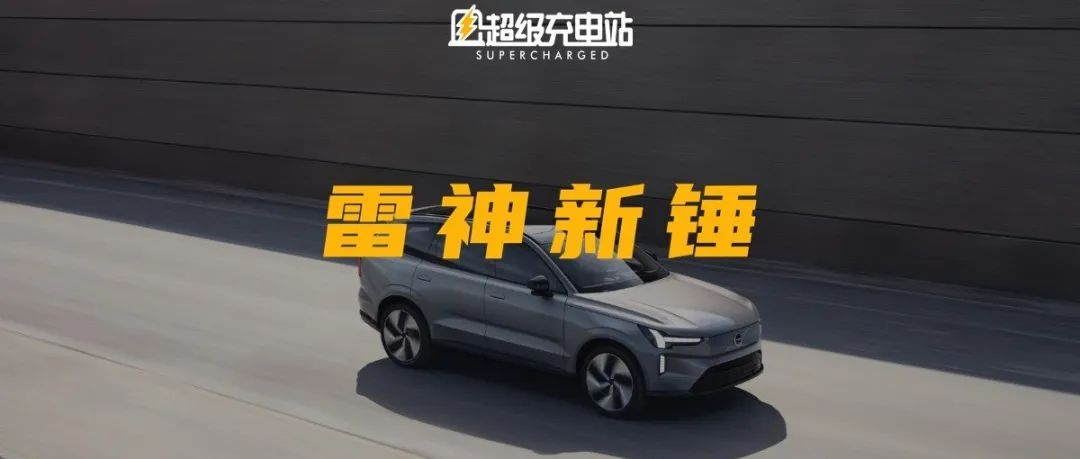Author: French Fries
Regarding choices, “only kids make choices” is a recent popular Internet meme, while facing adults who say “I want everything,” Volvo is definitely one of the car brands that executes this concept most effectively at the strategic level.
On the one hand, they demonstrate unprecedented radicalism in terms of energy form.
Volvo is the world’s first car brand to announce complete withdrawal from the development and manufacturing of internal combustion engines, becoming a pure electric luxury brand in 2030, achieving carbon neutrality in 2040. They have already drawn a clear path for brand transformation.

On the other hand, they always adhere to the unique genes that have been inherited for nearly a century.
In the EX90 launch event that just ended last night, the first word spoken by Volvo was “safe.”
The Invisible Shield
In Volvo’s presentation, the more precise environmental perception takes over “safety.”
- 16 ultrasonic radars;
- 8 cameras;
- 5 millimeter-wave radars;
- 1 Luminar laser radar.
What can truly anchor safety on the basis of perception hardware is the standard configuration. The full range of Volvo EX90 is equipped with all the above hardware, including Luminar laser radar.
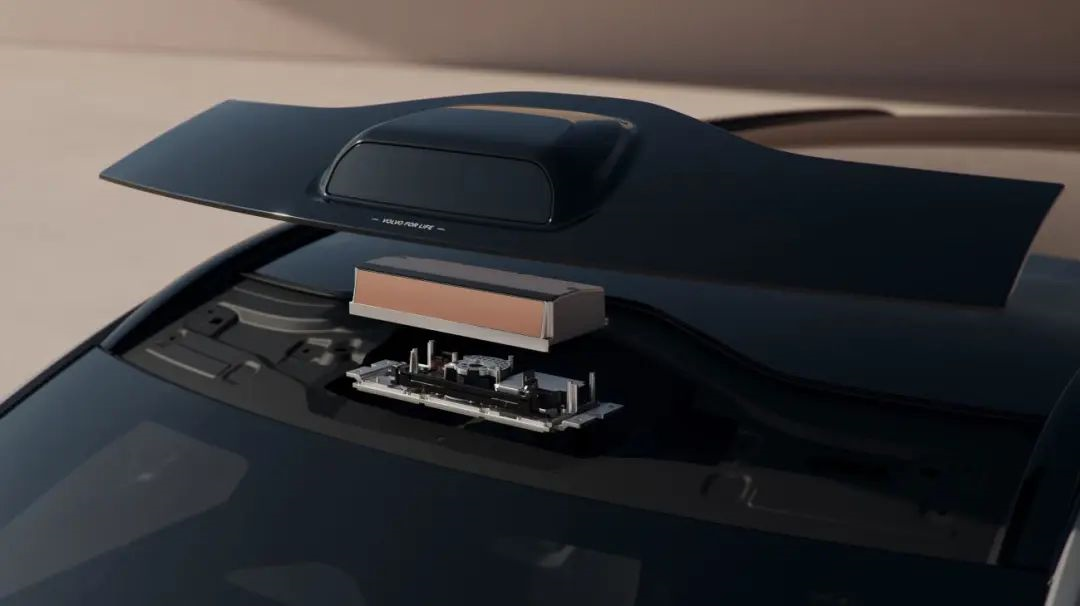
As the performance leader in the field of laser radar, Luminar laser radar with 1550nm wavelength, 0.05°*0.05° angle resolution, and 250 meters detection distance provides first-class perception ability and will even become “our extra pair of eyes.”

250 meters is equivalent to 50 lengths of the EX90, which means that even when traveling at a speed of 100km/h, it can provide us with an additional 9 seconds to avoid collisions.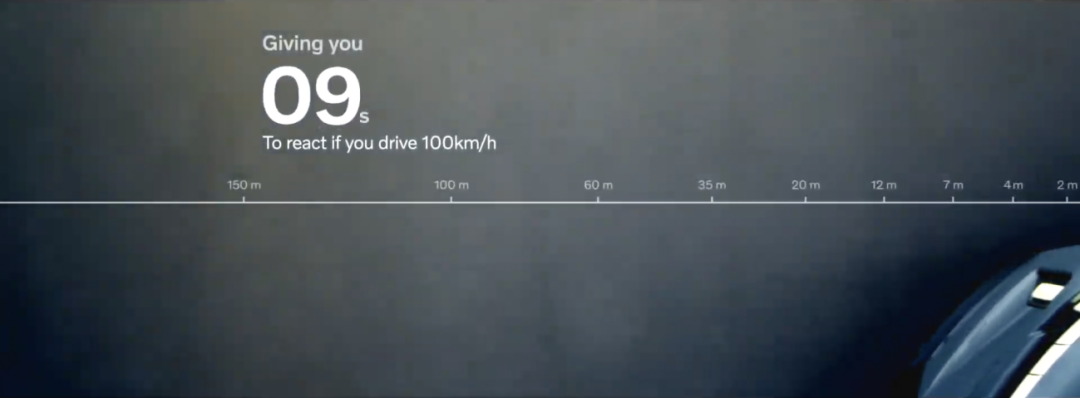
The NVIDIA Orin smart driving chip with 254 TOPS computing power, the central electronic and electrical architecture, and Volvo’s unique understanding of autonomous driving are responsible for processing these perceptions.
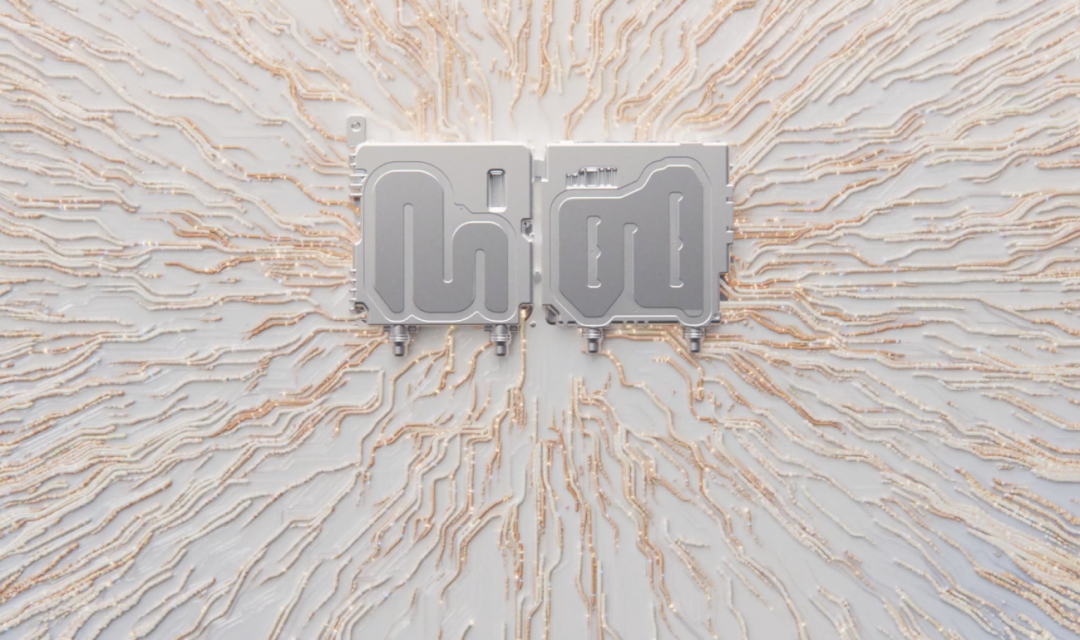
In Volvo’s plan, they divide the evolution of autonomous driving into three stages: “Drive”, where the driver is in charge; “CRUISE”, advanced driving assistance under system monitoring; “Ride”, fully autonomous driving that does not require the driver’s monitoring.
Unlike other brands, Volvo’s core approach to autonomous driving research and development is still focused on safety. In their view, “creating true autonomous driving is the correct way to achieve zero collisions.”

The release of the EX90 has brought two good news for this goal. First, the EX90 already has hardware that supports autonomous driving. Second, after passing safety testing, highly autonomous driving functions that do not require human monitoring will be launched in California.
Achieving “zero collisions” with intelligent driving, as stated in the subheading, is the invisible shield Volvo has built for safety.
The Start of the Pure Electric Era
When we shift our focus from intelligence to the vehicle itself, we have reiterated the importance of the native pure electric platform for electric vehicles countless times. At this critical juncture, Volvo has chosen “top-down” as its strategy.
Volvo said that from now on, they will release one pure electric model every year, and the EX90 is seen as the beginning of a new era by Volvo.
As the first vehicle model built on a brand-new native pure electric platform, the flagship pure electric SUV EX90’s “flagship” traits are first demonstrated by its powertrain configuration.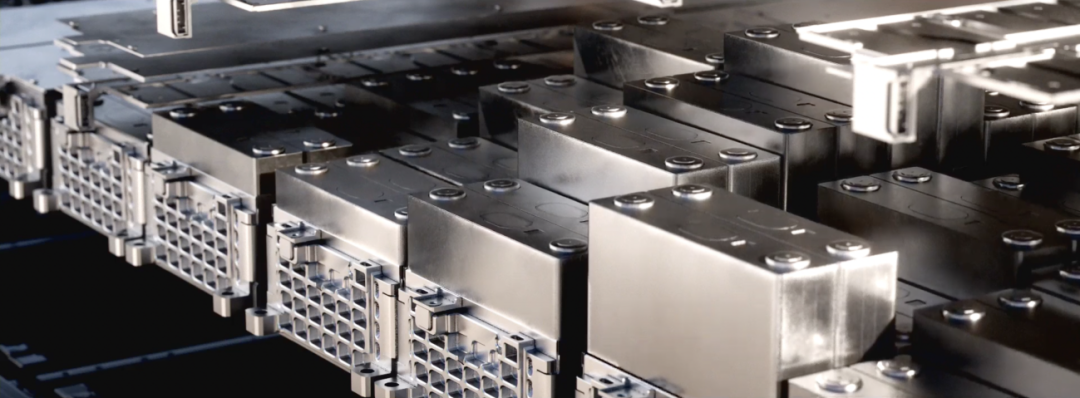
- All models come standard with dual motors;
- The regular version can output 300 kW and 770 Nm, while the performance version brings it up to 380 kW and 910 Nm;
- All models are equipped with a 111 kWh battery pack;
- The regular version has a WLTP range of 600 kilometers, while the performance version has a WLTP range of 590 kilometers;
- Supports 250 kW direct current fast charging, with a range of 180 kilometers after a 10-minute charge, and a charging time of less than 30 minutes from 10% to 80%.
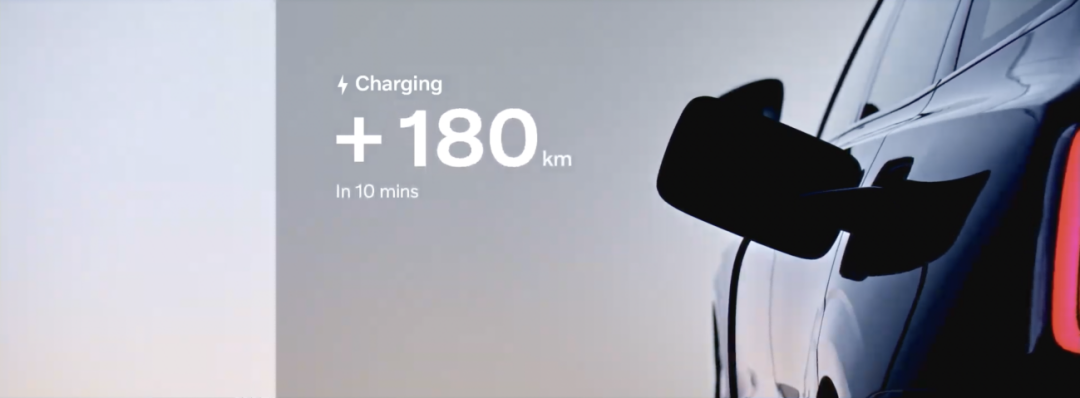
In this long list of specifications, the most noticeable feature may be its power performance. But on a deeper level, what I think the EX90 wants to convey is efficiency.
The EX90 uses two permanent magnet synchronous motors, which have the greatest advantage in efficiency compared to induction motors. And this is just the beginning. On the rear motor, it also comes with a clutch that can decouple the motor and wheel when the vehicle is coasting, reducing regenerative drag and achieving lower energy consumption.

In the regular version of the vehicle, the front motor also supports a “timely four-wheel drive” function-where the front motor does not participate in power output under normal power requests, but can be promptly “awakened” when the accelerator pedal is fully deployed. Of course, the EX90 also provides a “full-time four-wheel drive” setting to keep both motors outputting power at all times.
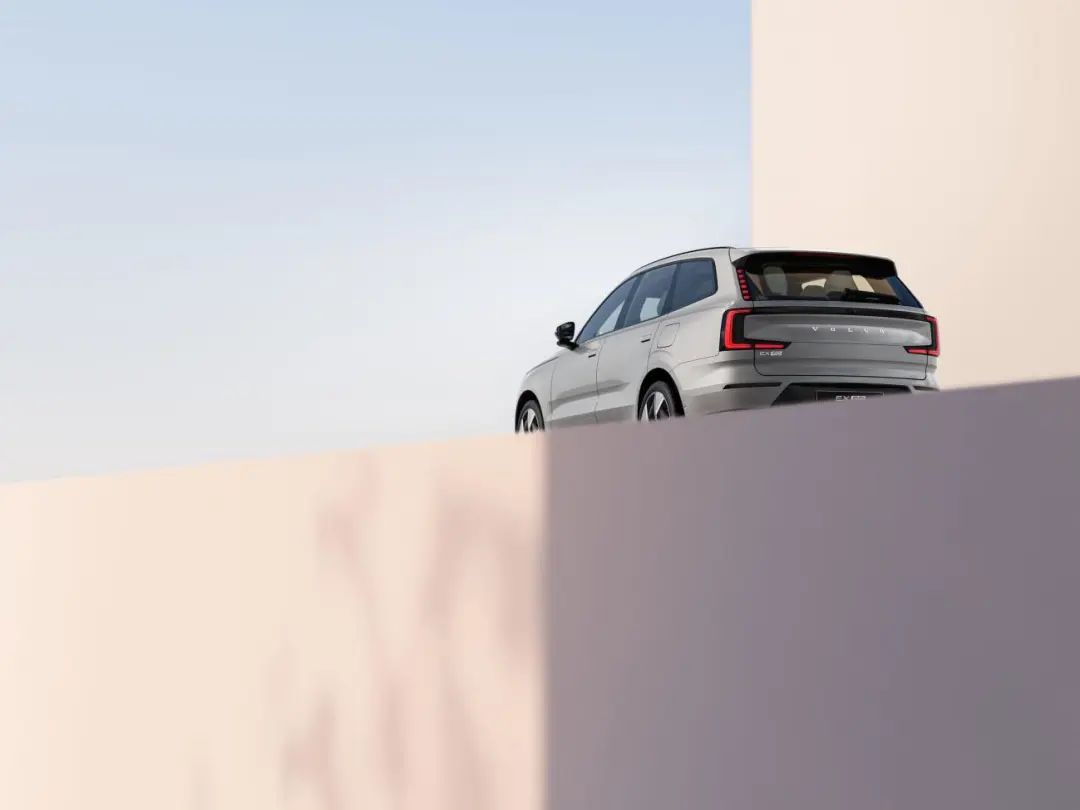
The efficiency pursued by the motors is first and foremost beneficial to the battery pack’s energy. High capacity and low consumption have always been the golden combination for long-range driving. The significance of a large battery pack exceeding 100 degrees is not limited to just range. The EX90 is the first Volvo that supports external discharge, a function that may be the most needed in Europe’s current energy crisis.## The Triumph of a Design Fanatic
It is said that you can always trust the Nordic people’s pursuit of design.
Placing this statement over the EX90, two details stood out to me.
First, Volvo’s “Hammer of Thor” is even more divine.
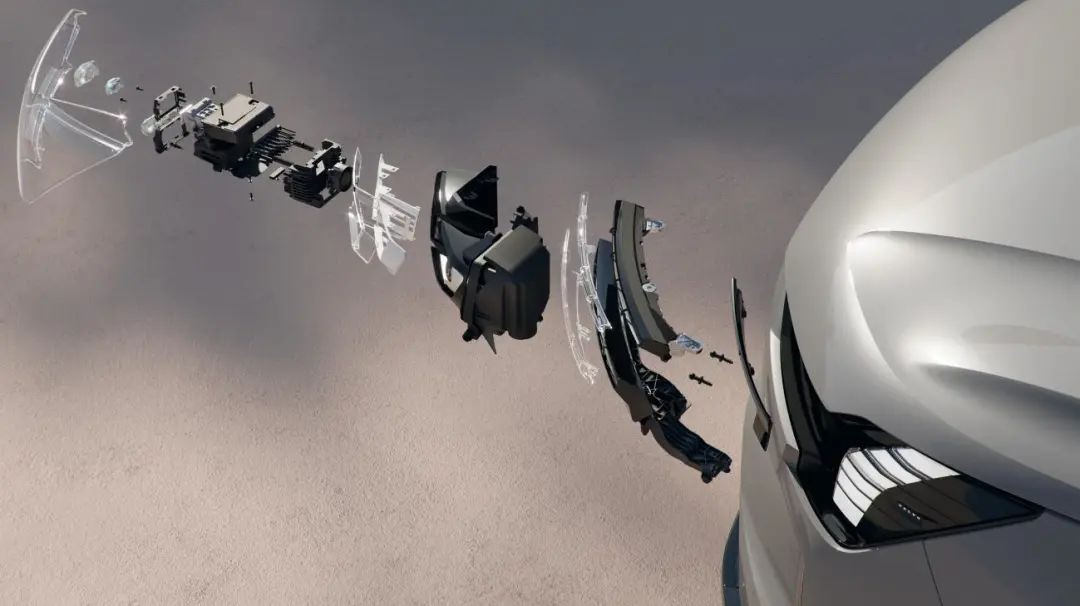
What does it mean to have an overflow of design ability? In my opinion, the so-called “overflow” is the unexpected and wonderful visual experience that is constructed subconsciously in your mind.
For the EX90 headlights, at first glance, the overall style still retains the characteristics of the “Hammer of Thor,” but the original light strip has become a pixel-based design with more distinct granules. It is probably equipped with some new matrix lighting technology? Just when you think it’s just a normal upgrade of the design details, the EX90 only needs one move, and I believe it will stun you.
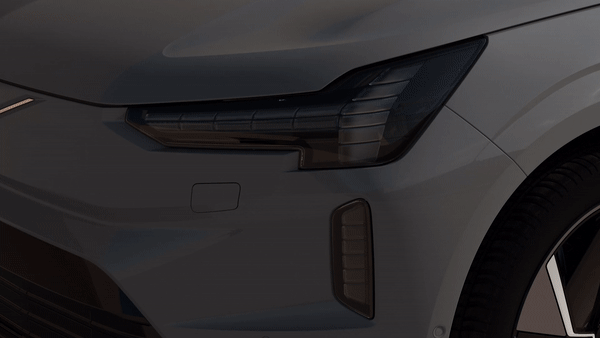
The Nordic people designed a movable structure inside the EX90 headlights, which clearly distinguishes the daytime running lights and the main lighting in different forms. When the front headlights are illuminated, the two rows of lamp beads move upwards and downwards respectively and turn off, while the main light for high-beams and low-beams show up and light up from behind, just like a person blinking.

What’s even more wonderful is that the two forms not only maintain the overall feeling of the “Hammer of Thor,” but also clearly let you see the difference between them. This kind of switching between “non-jarring” states should be called “silky.”
Secondly, it comes from the details on the back of the trunk.
Volvo has placed a small card with information about the interior space of the vehicle inside the upper edge of the EX90’s trunk door. The card clearly marks the length of the space from the trunk door to the backrests of the third, second, and first rows of seats, as well as the vertical height of the trunk opening. Below the measurements, Volvo has also depicted icons such as baby strollers, suitcases, golf bags, and skis.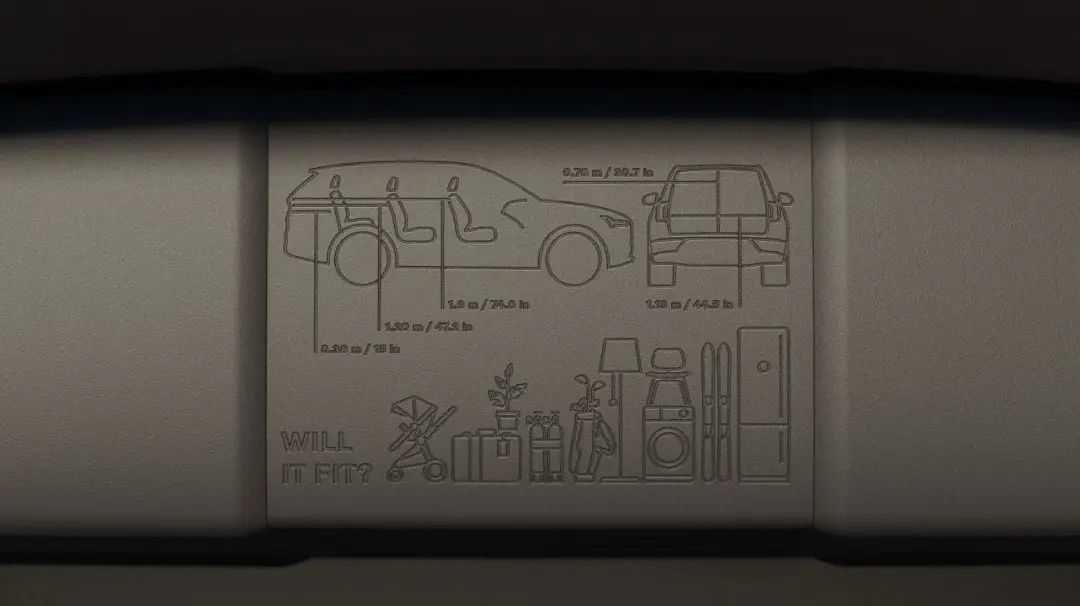
This small card is like a dictionary annotated with EX90 car interior space. With objective data and specific physical examples, my first instinct is that when I need to move large items into the car, I can immediately understand whether EX90 can fit it and how many rows of seats need to be folded to accommodate it.
Similarly, it is the natural design philosophy of Volvo that captures me, which does not require users to be artificially infused by the details of the EX90.
The key to success is undoubtedly the gradual and natural progress.
The agility of the “Thor’s Hammer” comes from the Volvo Concept Recharge concept car, the accumulation of intelligent driving comes from the self-driving concept car launched in 2012, and the new experience of the cockpit is derived from the collaboration with Epic Unreal Engine…

These seem to have been reported in the past by our “Super Charging Station,” and the design novelty of EX90 can be attributed to the mass production of conceptual technology to some extent.
From concept to practice, this is not a simple matter. The essence of Nordic simplicity is from innovation to nature.
As mentioned at the beginning, Volvo is both radical and inherited in my eyes, and EX90 is both avant-garde and persistent. They can smoothly transition between two seemingly opposing sensory experiences, and they can also match the product sensation with the brand tonality.
This may also be the confidence that Volvo has for transforming into a pure electric luxury brand.
-END-
This article is a translation by ChatGPT of a Chinese report from 42HOW. If you have any questions about it, please email bd@42how.com.
